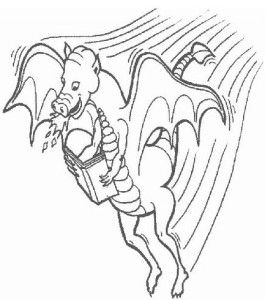a game to help remember spellings whose endmost letters can trip you up
Words in this game are paired together to create six terms for the learner to read and then attach to a picture they draw for themselves. This engages the learner by using creative ownership to promote the development of spelling-memory pathways illustrated by their own creative designs.
-
thumb
bandage
something
growling
bicycle
eater
magic
cow
autumn
news
blue
elephant
Words whose spelling begin with the shared letter = blue
Words whose spelling endwith the shared letter = emerald green
Each pair of words contain a shared letter. This letter ends the spelling
of the first word and begins the spelling of the next.
For example ‘blue elephant’ displays the letter ‘e’ at the end of one word
and the beginning of the next.
purpose:
I have picked spellings which regularly produce errors at their end.
Please adapt the game to suit your learner(s) own individual needs.
target spellings:
thumb (thum), something (sumfink), bicycle (bisicul), magic (magick), autumn (ortum), blue (bloow)
application:
Write out the words onto separate cards using blue for the words which begin the two-word terms, and emerald green (i.e. any shade of light green) for the words which end the term.
Read the words together with the learner(s) then shuffle them about and let each player (with or without your help) arrange the words into pairs which create the six terms. Clearly explain how the pairs are created.
Everybody then draws their own picture of each term. Have fun. This is not a drawing contest. This is an activity which stimulates the brain by giving it an activity to do which links words to pictures.
Remove the words and shuffle up the pictures. Can each player now remember which term links to each of their pictures? Can they name the letter which appears at both the beginning and end of the two-word term? Bring back the words so that players can check their answers.
Leave the pictures on display, or store away safely.
On the following day, test each player’s memory. How many two-word terms can be recalled by looking at their pictures, and, for a second (easy) point, which letter is shared by both spellings?
On the third day players need to recall the two-word term which matches each picture (1 point) and say which letter is shared by the spellings (1 point). For a further point the player needs to write down the first word of each term. They score a further point for each correct whole-word spelling.
To help with this final challenge, explain how players can gain extra points by spelling whole-words correctly. Show them the words and give them the opportunity to consult each spelling to see if it contains any letters which might trip them up.
Extension: Collect further words according to the spelling vocabulary needs of each learner. Create fresh two-word terms which follow the pattern of this game for play over following weeks.
Dragonfly Teaching – November 2014
Memorable Endings spelling activity ©www.dragonflyteaching.com
Sally Collard DipSpLD(Hornsby) QTLS, PGDip(SEN)
aka Sally Raymond – author

